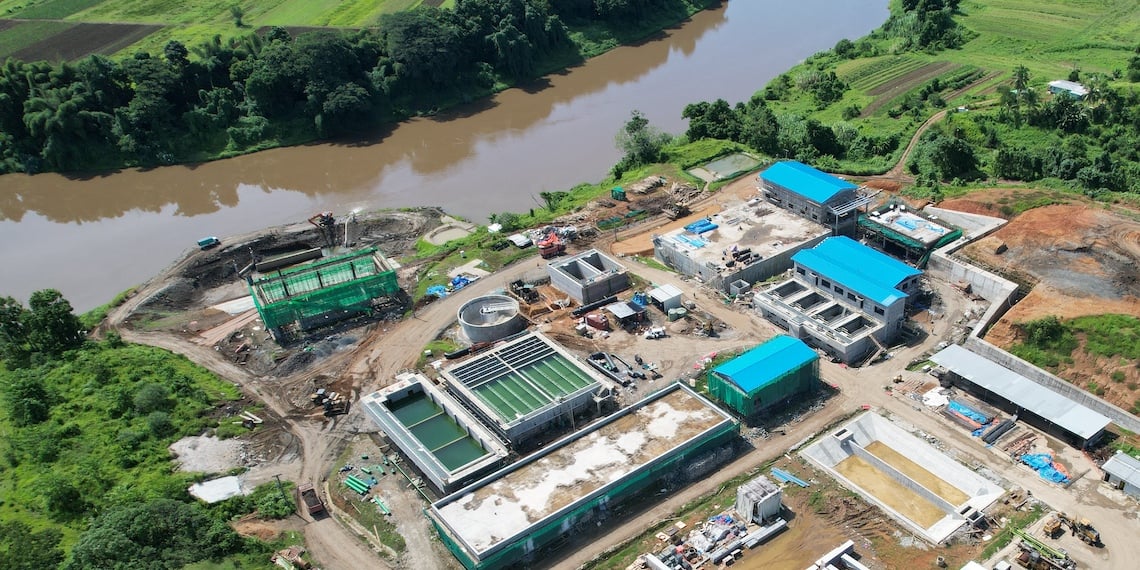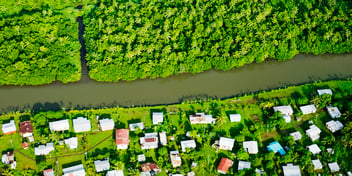How Fiji’s water sector is adapting to climate change

At the coalface of climate change, Fiji is in the midst of navigating the costly impacts of extreme weather and sea level rise, with one water leader saying building resilience is now an urgent requirement for the Pacific region.
International Water Association Australia (IWAA) is a branch committee of AWA and aims to connect the Australian water community with the activities of the International Water Association (IWA).
A non-profit organisation and knowledge hub for the global water sector, IWA seeks to connect water professionals worldwide to find solutions to the world's water challenges.
Presenting at the IWAA webinar Leading Global Practices for Smart Resilient Cities, Water Authority of Fiji (WAF) CEO Dr Amit Chanan said that, for Fiji and the Pacific region in particular, being climate-smart is all about moving on adaptation now.
“Climate change is already here. And being smart is about designing and implementing infrastructure that enhances the ability for us all to adapt to this new climate,” he said.
“Collectively, Fiji and the rest of the Pacific contribute less than 1% of total global greenhouse gas emissions. However, when it comes to climate change, there is a disproportionate impact on this part of the world, with rising sea levels and cyclones impacting the Pacific region nearly every month.
“The World Bank did a climate vulnerability assessment of water infrastructure in Fiji in 2017. Back then the estimated impact was about $4.5 billion. This is a significant challenge in terms of vulnerability and what needs to be done to address this vulnerability.”
Chanan said these impacts exacerbate the challenges Fiji already faces in terms of sustainable water provision, including meeting the demands of a fluctuating population, the need to optimise ageing infrastructure and tackling high rates of non-revenue water.
“The Water Authority of Fiji supplies water and wastewater services to all of Fiji. There are about 880,000 Fijians that we service. But every year we service about 1.6 million tourists in Fiji, as well,” he said.
WAF operates a total of 50 water treatment plants and 11 wastewater treatment plants that were built some 40 to 50 years ago. Chanan said that in the context of climate change, they were built for different weather patterns.
“Every day, their design capacity is being tested. We also have a challenge with non-revenue water, which sits at about 47%. For every 134,000 ML of water we produce, only 66,000 ML is consumed. This is a challenge in terms of the age of our infrastructure and the investment needed to control that non-revenue water,” he said.
“But the biggest challenge for us without doubt is climate change and what it'll do to us in the next three decades.”
Climate challenges
Assessing the weather patterns over the past three years, Chanan said Fiji has had its fair share of major cyclones that have impacted service provision or damaged water and wastewater assets.
“Whether it is rising sea levels causing a higher risk of saltwater intrusion, or intense rainfall washing contaminants into rivers, or hotter temperatures – all these things are already occurring here in Fiji,” he said.
“There are significant impacts that climate change is already having on water authorities’ ability to continue service in the Pacific.”
While rising sea levels are an issue many global water authorities don’t need to manage yet, Chanan said this climate impact is already costing WAF millions of dollars every year due to saltwater intrusion.
“As an organisation, we spend about $25 million per year on electricity bills. A large part of that is applied to our wastewater pumping stations,” he said.
“When we do analysis, we note that rising sea levels and infiltration into wastewater networks is chewing up a lot of that electricity in pumping.
“High-intensity rainfall is also a big issue. The pipelines that were laid for a different rainfall regime often get washed away because of high-intensity rain and more intense and frequent floods.”
And while sea level rise and extreme weather are causing havoc for infrastructure management, Chanan said the increasing lack of rainfall in certain areas of Fiji is also becoming hugely problematic.
“Our assets were built at a time when there was very little awareness about climate change. In the west, we have a dry period between April and November, and there is one large dam,” he said.
“In the east, the weather patterns were once very reliable – almost daily rain – so there is no water storage there; water is taken directly from the Rewa River, which is the main source of water for Fiji’s capital, Suva.
“But in December last year, which is typically the wet season, the flows in the river were less than half the average flows. This impacts the ability to access the raw water because the pumps don’t work [when flows are low].”
Smart approach
Given that climate adaptation needs to happen immediately in Fiji, Chanan said WAF is focusing on bolstering water security via a new supply scheme.
“The most significant project that we are working on at the moment in terms of climate adaptation is the Rewa River Water Supply Scheme,” he said.
“Currently, Suva has a daily supply and demand gap of about 3 ML per day. This project is about building resilience and bringing online an additional 40 ML of water per day to supply to the area.”
Chanan said building resilience into this new water supply scheme requires finding the right water source and location.
“Our existing water source is already being impacted by rising tides. This new project is being built 49 km from the river mouth. This is in response to rising sea levels and weather patterns now, but also for future changes, too,” he said.
“It’s an investment of US$270 million. This is the magnitude of the cost we are looking at in terms of ensuring that there is resilience in the system. A significant amount of the money has gone towards the pipelines that have to be laid to bring water 49 km upstream towards Suva.”
SDG6 links
In terms of strategic planning perspectives, Chanan said many of the Sustainable Development Goals (SDGs) are directly linked to water, highlighting the importance of meeting SDG6 for the resilience of Fiji’s economy.
“Being on a small island in the middle of the Pacific, some of the interactions between the SDG6 and other SDGs are perhaps more obvious and in plain sight. Whether it is Fiji’s tourism-dependent economy or coastal and marine systems, these come together with SDG6 and are obvious daily,” he said.
“For us, being climate-smart is about taking a more holistic and inclusive approach to our strategic planning. The Water Sector 2050 Strategy is the first time we have developed a national-level strategy focusing on the water sector.
“The idea is to ensure a whole-of-sector view, acknowledging water’s role in the economy, and making a vision for the next 30 years. An underlying objective of the strategy is to create an identified investment pipeline, for priorities for the water sector over the next three decades.”
Since entering the role of CEO at the Water Authority of Fiji 12 months ago, Chanan said he has realised that one of the biggest hurdles in developing a climate-resilient city in the Pacific region is access to funding.
“Water Sector 2050 is about being smarter with our strategic plan to address this challenge. We are hoping to not only identify different funding models but also a strategic plan that we can use with our various funding partners,” Chanan said.
Image caption: An aerial view of the Rewa River Water Supply Scheme in Viria, Naitasiri.


